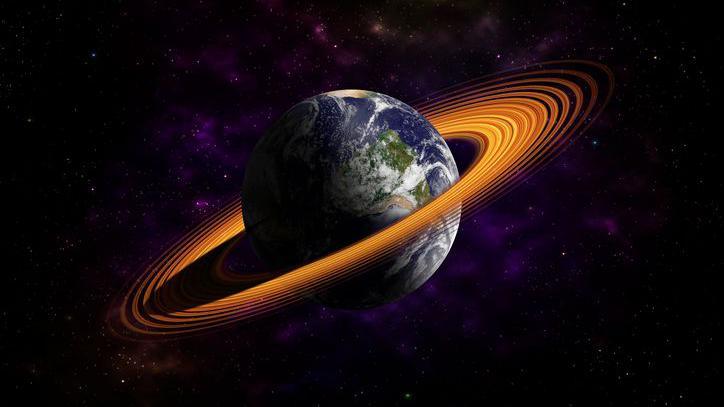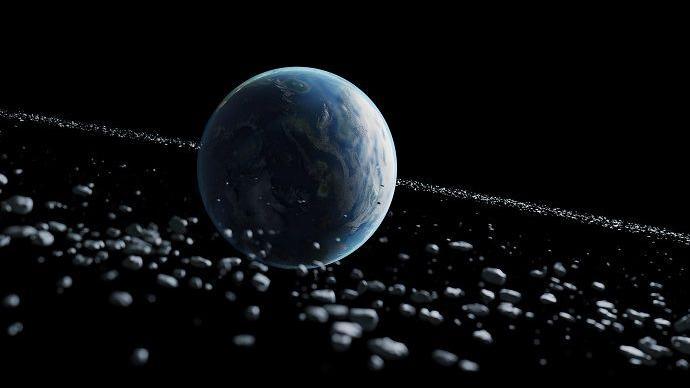Did Earth once have rings like Saturn?

- Published
Scientists have found evidence which suggests that Earth may once have had rings like Saturn.
Experts believe they could have formed around our planet about 450 million years ago.
They think that a ring of debris developed after a near collision with a large asteroid.
It's even thought that the rings may have had a big impact on Earth's climate at this time.
More space news
Nasa scientists solve ‘spiders' on Mars mystery
- Published14 September 2024
ISS: What is life like for stranded astronauts?
- Published16 September 2024
'Out of this world' images from astronomy photo competition
- Published13 September 2024
What did scientists find about Earth's rings?

It's widely believe that around 466 million years ago, a period of unusually intense meteorite bombardment - known as the Ordovician impact spike - started hitting Earth.
Scientists know of 21 big asteroid impact craters on our planet and a team at Monash University, Australia, decided to study them to see if there was a pattern in their locations.
The team mapped out where all these craters would have been when they first formed.
Researchers noticed that they were all very close to the equator - within 30 degrees of it - not randomly scattered across the planet as you might expect.
Experts say that this pattern could be explained by a ring system.
They suggest that a large asteroid had a close encounter with Earth, which resulted in it breaking up around our planet, forming a debris ring - similar to the rings seen around planets like Saturn,
Lead study author Professor Andy Tomkins explained: “Over millions of years, material from this ring gradually fell to Earth, creating the spike in meteorite impacts observed in the geological record.”
“We also see that layers in sedimentary rocks from this period contain extraordinary amounts of meteorite debris,” he said.
Scientists know that the Earth also started cooling rapidly around this time – and suggest that this could also be explained by the ring casting a shadow on Earth and blocking sunlight.
Professor Tomkins added: “What makes this finding even more intriguing is the potential climate implications of such a ring system.”
This period of global cooling - known as the Hirnantian Icehouse - is recognised as one of the coldest in the last 500 million years of Earth’s history.
